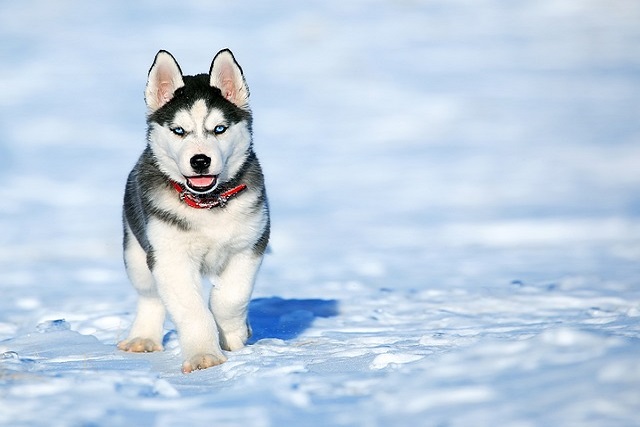
How do i train my dog to be obedient?
Watching your dog dart across the park ignoring your calls isn’t just frustrating—it can put them at risk near busy streets or public spaces.
Your peaceful afternoon stroll shatters the moment a distant Labrador appears. Suddenly, your sweet terrier morphs into a barking, lunging whirlwind on the leash. You feel every neighbor’s stare burning into you as you wrestle with the harness, wondering desperately, "Will walks ever feel peaceful?" That explosive reaction isn’t disobedience or spite—it’s your dog drowning in a wave of panic, their brain screaming danger at the sight of another dog. Understanding how to help them feel safe unlocks the door to calmer walks.
This intense reactivity is often rooted in fear or frustration. A fearful dog, perhaps undersocialized as a puppy or remembering a past scare, perceives other dogs as genuine threats. Their stiff body, wide "whale eye," and low growls mean: "Stay away from me!" A frustrated greeter, usually a super-social dog, desperately wants to meet but feels trapped by the leash, leading to whining and excited lunging. Both experiences flood their system with cortisol and adrenaline, triggering that fight-or-flight surge. Crucially, when you instinctively yank the leash tight, it signals "Yes, be scared!" to your dog, amplifying their panic. Punishing this fear with leash jerks, shouting, or shock collars is disastrous – it confirms their worst suspicion: "Other dogs make bad things happen!" This erodes trust and deepens the anxiety long-term.
Start transforming walks today by becoming a distance detective. Notice how far away another dog can be before your dog tenses up – that’s their "safe zone." Arm yourself with irresistible, high-value treats (think real chicken or cheese, not kibble). The instant they spot a dog within their safe zone but before they react, mark the moment with a cheerful "Yes!" and continuously reward them with treats until the other dog passes. This powerful technique, called counter-conditioning, rewires their brain: "Dog = amazing treats happen!" If they tip over into barking or lunging, calmly and quickly create distance – turn and walk away until they relax. Never force them to "face their fear" by getting closer. Master the emergency U-turn: teach a cue like "This way!" by cheerfully turning 180 degrees and moving briskly away, scattering treats at your feet like breadcrumbs. Practice this until it’s automatic. For dogs in busy apartments, avoid trigger-packed hallways and elevators during rush hour. Opt for stairwells, side exits, or schedule walks for quieter times like early mornings. Inside, play recordings of distant dog sounds at very low volume while they enjoy a stuffed Kong, gradually increasing the volume only if they stay relaxed.

Managing reactivity responsibly keeps you compliant and shows community respect. Always keep your dog securely leashed – most US cities enforce 6-foot leash laws, with fines reaching $300 in places like Chicago. Even if your dog seems calmer off-leash, it’s illegal and unsafe. Scoop their poop immediately, every single time, even if it’s stress-induced during an encounter. Anxiety isn’t an excuse for skipping poop-scoop duty; fines are steep ($250+ in NYC). Ensure their rabies vaccination tag is visibly attached to their collar or harness – it’s a nationwide legal requirement and vital proof if an incident occurs. Invest in a secure, well-fitted front-clip harness; it gives better control and protects their neck if they lunge. If your dog barks, offer a quick, polite apology to neighbors like, "We’re working on training, sorry for the noise!" rather than yelling at your dog, which only adds stress. Culturally, force-free training is essential. Punitive tools like shock collars worsen reactivity and conflict with modern animal welfare standards upheld by vets and trainers. In dog-dense areas, practice proactive sidewalk etiquette: shorten your leash when passing others, cross the street early, and communicate clearly with a friendly "We’re training, need some space, thanks!" This prevents surprises and shows consideration.
Stopping leash reactivity is a journey of patience, not a quick fix. It’s about consistently building new, positive associations and managing their environment to keep them under threshold. Celebrate the small victories: a glance at another dog without barking, a calm step sideways. For significant challenges, partner with a Fear-Free Certified professional dog trainer or a veterinary behaviorist. Remember, your dog isn’t trying to ruin your walk – they’re struggling. Your calm, consistent guidance is their anchor to feeling safer in a world full of canine surprises.

Watching your dog dart across the park ignoring your calls isn’t just frustrating—it can put them at risk near busy streets or public spaces.

New puppy owners often find themselves rushing to clean up accidents before they set in, and that’s where puppy pad training becomes a game-changer.

If you've noticed your dog's waistline disappearing and your veterinarian has mentioned those few extra pounds, your first instinct might be to simply reduce the amount of food in their bowl.

Training a dog to use a designated spot indoors isn’t as daunting as many new owners fear, but it does take consistency and an understanding of your pet’s needs.

That moment of dread on a walk is all too familiar for many new dog owners. You see another dog approaching down the sidewalk of your neighborhood

If the sight of another dog on your neighborhood walk makes your heart sink as your own dog erupts into a frenzy of barking and lunging, you're not alone.